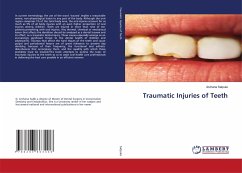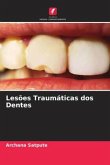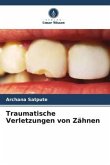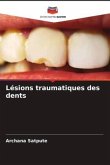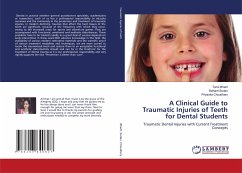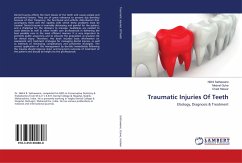In current terminology, the use of the word 'trauma' implies a reasonable severe, non-physiological lesion to any part of the body. Although the oral region comprises 1% of the total body area, the oral injuries account for as much as 5% of all body injuries with an even higher proportion of oral injuries among children. Teeth are injured in more than nine of ten patients presenting with oral injuries. Any thermal, chemical or mechanical lesion that affects the dentition should be analyzed as a dental trauma and its effect, as a traumatic dental injury. These causes especially emerge as an increasingly significant threat to the dental health of children and adolescents. Traumas that affect the hard tissues of the teeth and cause pulpal and periodontal lesions are of great relevance to present day dentistry, because of their frequency, the functional and esthetic disturbances that accompany them, and the rapidity with which these problems must be treated.This book attempts to outline the topic of traumatic injuries to the teeth so as to assist oral health care professionals in delivering the best care possible in an efficient manner.
In current terminology, the use of the word 'trauma' implies a reasonable severe, non-physiological lesion to any part of the body. Although the oral region comprises 1% of the total body area, the oral injuries account for as much as 5% of all body injuries with an even higher proportion of oral injuries among children. Teeth are injured in more than nine of ten patients presenting with oral injuries. Any thermal, chemical or mechanical lesion that affects the dentition should be analyzed as a dental trauma and its effect, as a traumatic dental injury. These causes especially emerge as an increasingly significant threat to the dental health of children and adolescents. Traumas that affect the hard tissues of the teeth and cause pulpal and periodontal lesions are of great relevance to present day dentistry, because of theirfrequency, the functional and esthetic disturbances that accompany them, and the rapidity with which these problems must be treated.This book attempts to outline the topic of traumatic injuries to the teeth so as to assist oral health care professionals in delivering the best care possible in an efficient manner.
In current terminology, the use of the word 'trauma' implies a reasonable severe, non-physiological lesion to any part of the body. Although the oral region comprises 1% of the total body area, the oral injuries account for as much as 5% of all body injuries with an even higher proportion of oral injuries among children. Teeth are injured in more than nine of ten patients presenting with oral injuries. Any thermal, chemical or mechanical lesion that affects the dentition should be analyzed as a dental trauma and its effect, as a traumatic dental injury. These causes especially emerge as an increasingly significant threat to the dental health of children and adolescents. Traumas that affect the hard tissues of the teeth and cause pulpal and periodontal lesions are of great relevance to present day dentistry, because of theirfrequency, the functional and esthetic disturbances that accompany them, and the rapidity with which these problems must be treated.This book attempts to outline the topic of traumatic injuries to the teeth so as to assist oral health care professionals in delivering the best care possible in an efficient manner.

